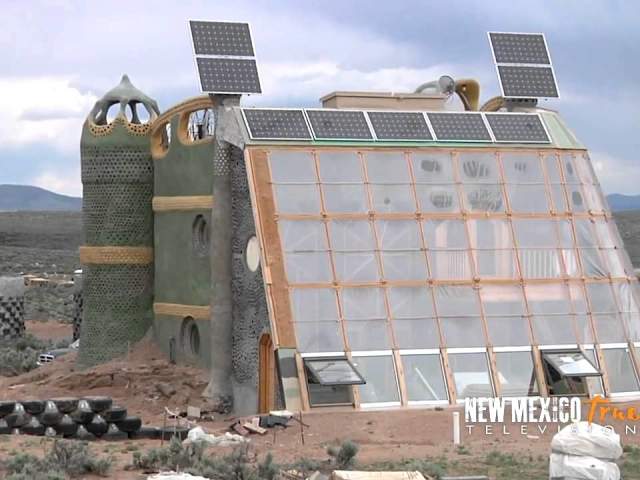Road Trip for True Architecture Aficionados (11 stops – 369.3 miles)
New Mexico’s iconic adobe architecture has remained largely unchanged for centuries, and is showcased in this trans-state tour that adds to the historic sights with innovative, new-age structures. Marvel at the 1,000-year-old Taos Pueblo, a living Native American community and UNESCO World Heritage Site. Peek behind the curtain at Los Alamos, touring headquarters for the World War II-era secret mission to build the first nuclear weapons. Revel in mysteries and history at mission churches and chapels, and don’t miss breathtaking and airy performing arts spaces.
Additional Road Trips:
Adventure | Native Culture | Cuisine | Agriculture | Roadside Oddities | Route 66 | Families
A. Taos Pueblo
The five-story Taos Pueblo contains many private homes built with adobe in a style that predates the arrival of Spanish explorers in New Mexico in 1540. In addition to two multi-story structures, the pueblo includes seven kivas and a track for traditional footraces. A UNESCO World Heritage Site, the pueblo is considered an outstanding representative of that era of architecture and remarkable preservation of a way of life that blanketed the Southwest for centuries.

Earthships push sustainable building to capacity, relying on thermal and solar heating and cooling to hover at a comfortable temperature, while installed photovoltaic and wind power systems provide electricity, water systems recycle and contain sewage, and water harvesting systems catch rain and snowmelt. An education center allows for experiencing and, to a certain degree, dissecting the structures.
D. Fuller Lodge
Originally a dining hall for the boys’ school atop the Pajarito Plateau before the war effort pushed it elsewhere—and then a dining hall for scientists working on the Manhattan Project—this massive pine log structure has since become a cultural center open to the public. The lodge, designed by John Gaw Meem and built in 1928, has also been a hotel.
The open-air Crosby Theatre allows operagoers to watch the sun set over the Jemez Mountains to the west and Sangre de Cristo Mountains to the east amid performances. The curved mezzanine roof was designed to trace the movement of acoustics from stage to audience, and doubles as rainwater catchment for the surrounding landscaping.

This Gothic structure shows the aesthetics of early French immigrants to Santa Fe, who brought Parisian architecture to New Mexico. However, most visitors come with an eye for the chapel’s spiral staircase, which makes two 360-degree graceful turns like a helix without a visible means of central support, long considered a mystery.

G. Los Poblanos Historic Inn & Organic Farm
John Gaw Meem, called the “Father of Santa Fe Style,” combined traditional regional and 20th century sensibilities to create the Territorial Revival style now an emblem of the region. Los Poblanos is considered one of his most important projects. This 20-room historic inn, designed in 1932, is surrounded by 25 acres of lavender fields and formal gardens.
H. Old Town
Ten blocks of historic adobe buildings around the Plaza comprise Albuquerque’s Old town, founded in the early 1700s. Icons include the city’s oldest building, the San Felipe de Neri Church, which dates to 1793. Pueblo-Spanish style architecture—flat-roofs, portals, and rounded corners—dominates here.

I. KiMo Theater
This Pueblo Deco theater opened in 1927, a movie palace designed by Carl Boller, from the Kansas City-based architecture firm Boller Brothers. Imagery from surrounding pueblos and western folklore inspired some of the decorative elements. Construction cost $150,000 and was done in less than a year. A $18,000 Wurlitzer organ provided a soundtrack for silent movies.

J. Old San Miguel Mission in Socorro
Franciscan missionaries built a church on the site 400 years ago, then abandoned it after the Piro Indians they sought to convert left the area. The foundation and frame of the old church were used to rebuild in the 1800s when the area was resettled. Renovations added bell towers and a pitched roof, as well as finishes that mirror California Mission style.

Architect Antoine Predock designed this theater to stand dead center between Sunset and Sierra Blanca peaks on the summer sun’s axis on Fort Stanton Mesa in southern New Mexico. Its limestone wedge form rises from the mesa, broken up by glass entryways. Opened in 1997, the $22 million performing arts center showcases theater, music and dance.

BONUS STOP:
Salinas Pueblo Missions National Monument
In the first half of the 17th century, Franciscans missionaries moved into the Salinas Basin to share territory and attempt to convert the Puebloan residents of thriving trade communities here. But by the 1670s, both Pueblo Indians and Spanish colonists were gone. Their ruins stack together here—three mission churches and a partially excavated pueblo.







